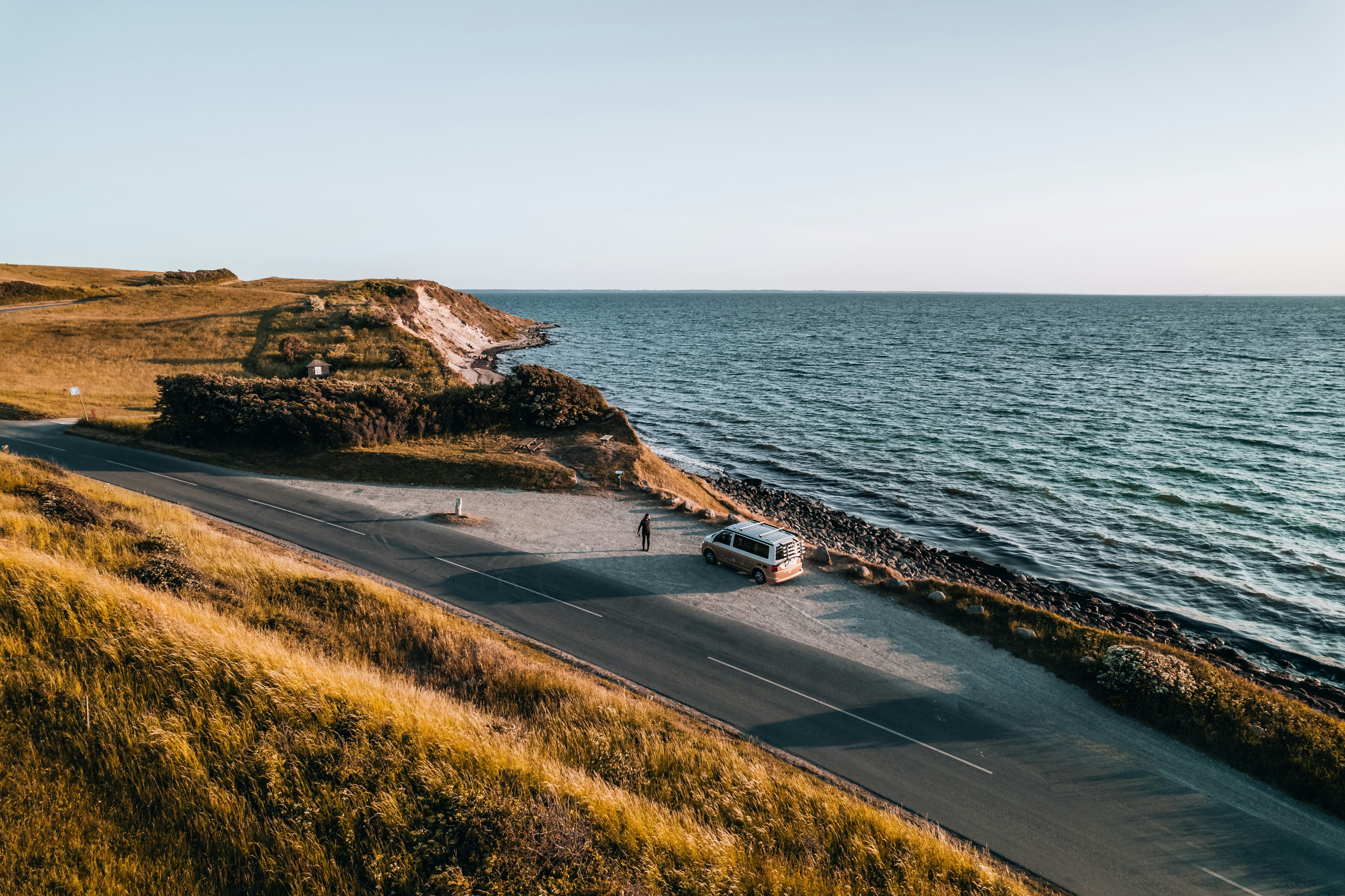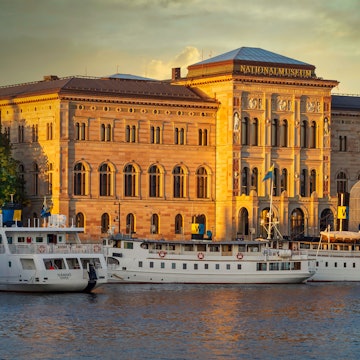

Vesterstrand in the Fyn archipelago is one of the best places to visit in Copenhagen for relaxing beaches, cozy cafes and scenic views. L. Gieger/Shutterstock
Denmark might be the smallest of the Scandinavian nations, but it punches well above its weight when it comes to things to see and do. Unlike its neighbors, Sweden and Norway, it is not a land of mountains and forests. This small, flat country – split across two main islands and a large spit of land attached to mainland Europe – is fringed with white sand beaches and pretty fishing villages. It’s also an island nation with 444 islands, including Zealand, where the urbane and chic capital Copenhagen is located.
It’s an easy place to visit Denmark: everyone speaks English (quite possibly, better than you) and it’s easy to get around too, by car, public transport or bike.
Here are some of the very best places to consider including in any itinerary.

1. Copenhagen
Best for world-class city living
Denmark’s capital is a small, bike-happy city where the world’s best chefs rub shoulders, fashionistas prowl the streets, and the idea of hustle culture is anathema. Dominated by stunning architecture – from ancient castles to experimental offices – and a strong commitment to work-life balance, visit for yourself to see if you can spot why it regularly tops the list of the world’s most liveable cities.
What to see? Well, there’s the rub. It’s not a city packed with sights, the iconic but often underwhelming Little Mermaid being the most well-known. It’s more about experiencing a laid-back local vibe: rent a bike and explore, swim in the harbor, eat pastries at one of the city’s top-rated bakeries, ride the electric harbor bus, brunch at Glyptoteket and wander around its marble statue gallery, marvel at Viking treasure in the National Museum, and ride historic rollercoasters at Tivoli Gardens. More offbeat options include skiing down Copenhill, exploring the beach promenade at Amager Strand and visiting the modern art gallery Arken, a short train ride south of the city.
Planning tip: Copenhagen’s restaurants don’t often take walk-ins: book online and reconfirm before you visit. Check out our guide to the best places to eat and drink in Copenhagen.

2. Aarhus
Best for student vibes
Aarhus is Denmark’s bijou second city and is home to a large university along with a huge modern art gallery topped with a rainbow walkway, ARoS, and an outstanding ethnographic museum, Moesgaard, famous for the bog body of the Grauballe Man. There’s a youthful vibe on the streets, particularly in the Latin Quarter, a handful of cobbled streets where cafes spill out onto the pavement and colorful independent shops sell homewares and fashion. It’s also a good base for anyone staying in Jutland, with a decent range of hotels and places to eat. Near to Aarhus, you can find the Mols Bjerge National Park and the country’s lake district, along with plenty of easy-to-reach white-sand beaches.

3. North Zealand
Best for world-class art and culture
On the coast north of Copenhagen, the Danish Riviera makes for delightful day trips. Gilleleje, a fishing village where thatched cottages reach down to the water, is particularly pretty, as is Tisvildeleje. Between these beach towns and Copenhagen lie Helsingør, an ancient town with the castle that inspired Shakespeare’s Hamlet, and the Louisiana Museum of Modern Art, an outstanding world-class gallery with a sculpture park and gardens overlooking the sea. To the west of Copenhagen, Viking kings are buried in the cathedral in Roskilde, an ancient cobbled town, and its Viking boat museum gives wonderful insights into the era, plus occasional boat tours on replica ships.
Planning tip: Getting around is easiest by train. Buy a ticket at Copenhagen Central Station.

4. North Jutland
Best for Danish nature in the raw
It might only take around 5.5 hours to drive from Copenhagen to North Jutland, but it is like going to another planet. Copenhagen is mannered and fashionable with coffee prices that make your eyes water; North Jutland is thrillingly wild and untamed, with heathland, exposed beaches, the country’s first national park, Thy, and barely a cafe in sight. Exploring this part of Denmark introduces you to glimpses of stormy seas and a different take on Danish life. It’s packed with sights: a church buried in the sand, a roving sand dune, a famous beach town and former artists’ colony, Skagen, a rescued lighthouse, and Aalborg, the home city of the architect who built the Sydney Opera House.
Planning tip: Car rental is essential to get around here.

5. West Jutland
Best for beach-lovers and birders
West Jutland has long, wide beaches, campsites and beach hotels and is a prime local family holiday spot. Nearby at the Wadden Sea National Park, a UNESCO-listed nature area on the southwest coast of Jutland, velvety seals loll on offshore rocks and a peppering of islands offer an idyllic take on life. Mandø is particularly gorgeous, a tidal island bursting with birds and wildflowers; the area also attracts several rare migratory species. The Wadden Sea Center offers great tours and insights. In September, the wetlands are the backdrop for impressive starling murmurations.
Planning tip: For the Wadden Sea area, stay in Ribe, which has plenty of hotels and restaurants. Landfolk and Dancenter are popular local websites for renting a summerhouse.

6. Odense
Best for fairytale fans
Denmark’s third city, Odense, is famously the home of Ugly Duckling author Hans Christian Andersen, and his life and work are celebrated in two museums, H.C. Andersens Hus being the best and most modern of the two, which adds an experiential take to his story. Grab local food in a pub, bakery or at Storms Pakhus, a global food market, to round out your day. The island of Fyn is known as the "garden of Denmark" and has some of the country’s best produce. Brunsviger, a warm, yeasty cake with butter and brown sugar on the top, is one of the local treats.

7. South Fyn archipelago
Best for island hopping
South of Odense, Denmark fragments into numerous pretty islands where wild horses roam, half-timbered cottages overlook beaches, birds sing, and people flock from around the world to get married. There’s often a wholesome, nostalgic Famous Five-style atmosphere at play. Ærø and Langeland are the largest and best-known islands; ferries to the archipelago run from the towns of Svendborg, Fåborg and Rudkøbing. Generally, it makes sense to take a car with you, although some of the islands are car-free. Island hopping is possible through the summer.
Planning tip: Odense is 1.5 hours by train from Copenhagen and the town is walkable from the station.

8. Bornholm
Best for sunshine
Bornholm is known as Denmark’s sunshine island. It’s the sunniest spot in the whole country, largely because it’s located quite some way away in the Baltic Sea, closer to Sweden than Denmark. That said, it’s a decidedly Danish spot, with fish smokeries, pubs, ice cream and sweet shops in villages along the coast. Its quality of light has inspired painters, ceramicists and artists for centuries, while one beach has sand so fine it was used for hour glasses.
Planning tip: Booking early is a must – summerhouses and hotels typically sell out for summer around Easter.














